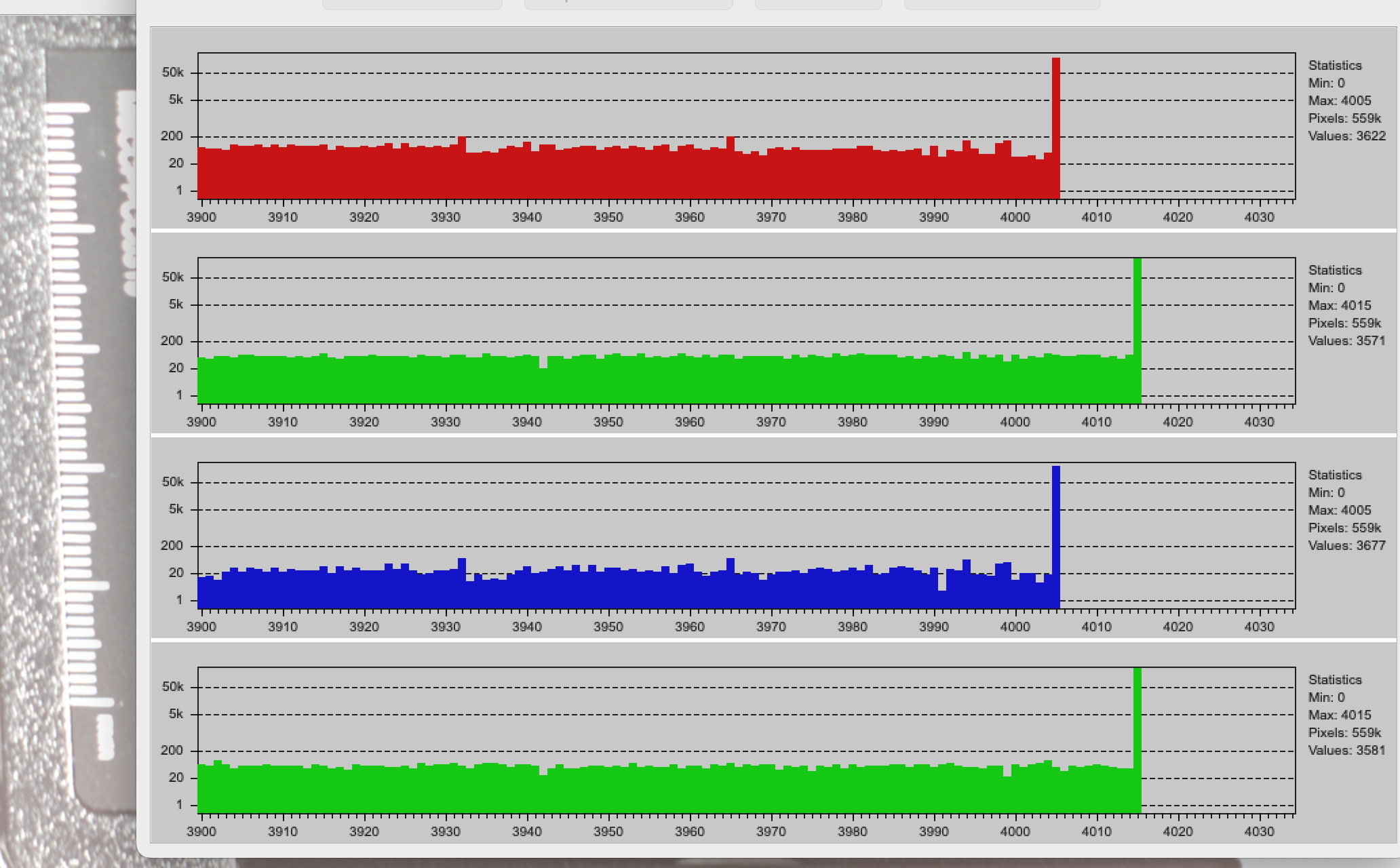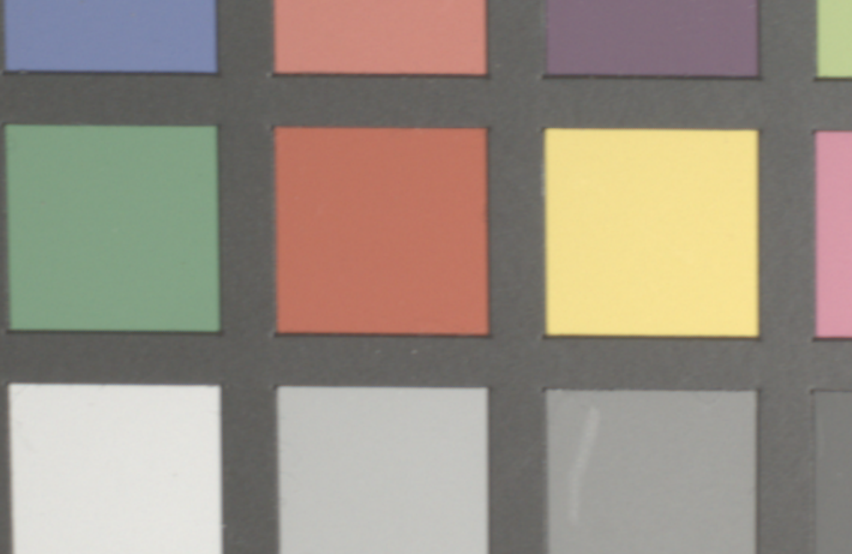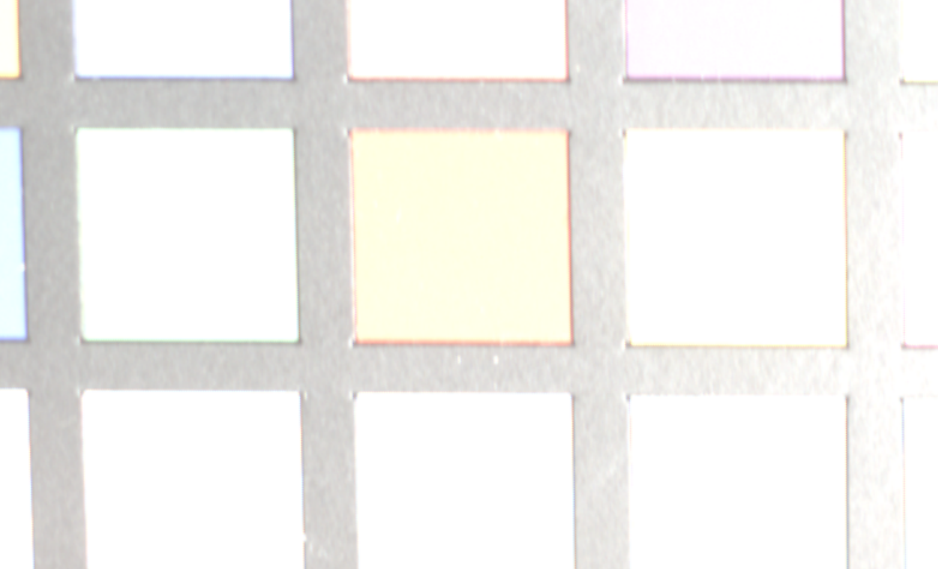Submitted by polyrhythm on
Forums:
Hi, I wonder if anybody has encountered this in a camera sensor...I have a rather obscure cinema camera that uses a Kodak Interline CCD sensor.
I believe the sensor is this one: KAI-02150
The camera outputs 12-bit uncompressed DNGs.
I have done some testing with RawDigger on the native DNG files that camera renders. It seems that it does something unusual when it saturates.
As you can see on the below histogram, on a white patch that is overexposed, the sensor R and B channels saturate at 4005.
The G and G2 channels saturate at 4015.
Here are two images showing what happens to the red patch at normal exposure and over-exposed.
As you can see, when it over-exposes, because the green channel saturates higher, it seems that hue shifting occurs such that green is basically added to everything (I guess?) because it has a higher total value at max. But then, how does anything become white...? Perhaps it is a function of the embedded camera profile?
I wonder if anybody is familiar with sensor behavior like this, if it somehow is an artifact of CCD vs CMOS thing, or just perhaps a characteristic Kodak built into their sensor? And, again, how this actually gets to white or not if green is always saturating higher...?
Thanks in advance for any ideas. =)
Image:




This may be a result of
Submitted by LibRaw on
This may be a result of internal raw data pre-conditioning. We've seen such things with CMOS sensor-based cameras too, like Nikon.
Add new comment